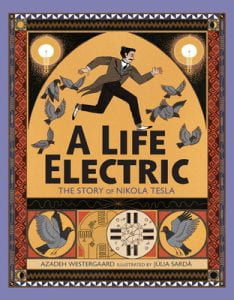 Buzzeo, Toni. Light Comes to Shadow Mountain. Holiday House, 2023. 978-0-823-45384-9. 263 p. $17.99. Grades 4-6.
Buzzeo, Toni. Light Comes to Shadow Mountain. Holiday House, 2023. 978-0-823-45384-9. 263 p. $17.99. Grades 4-6.
In her debut novel, Buzzeo has crafted an engaging story based on the arrival of electricity to the eastern Kentucky mountains in the 1930s. At that time, few rural areas had electricity, even though most cities did. Cora Mae Tipton lives on Shadow Mountain, one such unelectrified community. She dreams of becoming a journalist like Nellie Bly, while her best friend Ceilly wants to be an aviator. When news of the Rural Electrification Act arrives in the holler, the two girls are thrilled to learn about the formation of an electricity cooperative. Not everyone is excited about the life-changing news, including Cora’s mother, who is pregnant and still grieving for her daughter Ida, who died from the flu. Cora, always with a notebook in hand, questions her Pap, who is now working for the project. The budding journalist learns about the fees, which are prohibitive for some families and the school. Believing in the importance of electricity in the school, the friends come up with a successful plan to raise money for a subscription, but then trouble besets the Tipton family. Mrs. Tipton becomes more depressed, and there is frequent bickering between mother and daughter. One of the twins is badly burned, and the fundraising money is needed for medical bills. Cousin Glenna comes to stay to avoid an abusive father. Then Mrs. Tipton goes into premature labor at home. With no adult to help, Cora must call on her inner strength if she is to save the baby and bring the Mountain out of the shadows. This piece of historical fiction offers an eye-opening look into rural America of the past- a world of pack horse libraries, settlement schools, and the frontier nursing service, which are all described in the back matter. The author has created well-developed characters, some who are resistant to change and some who embrace it. With its compelling plot, this deep and sensitive story will leave readers hoping for a sequel to learn what the future holds for the likeable Miss Tipton.
THOUGHTS: This outstanding book is highly recommended for middle grade libraries.
Historical Fiction


